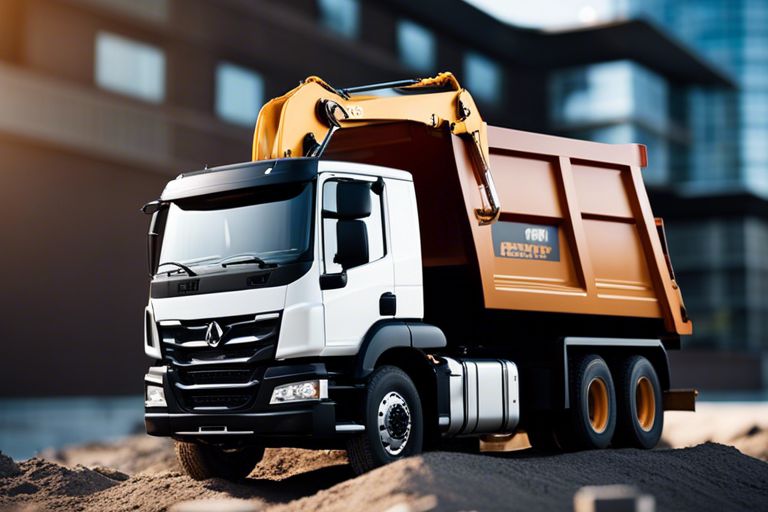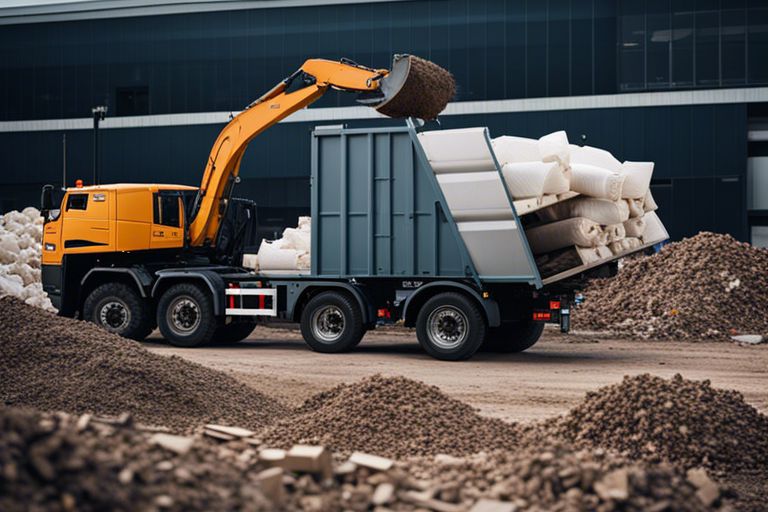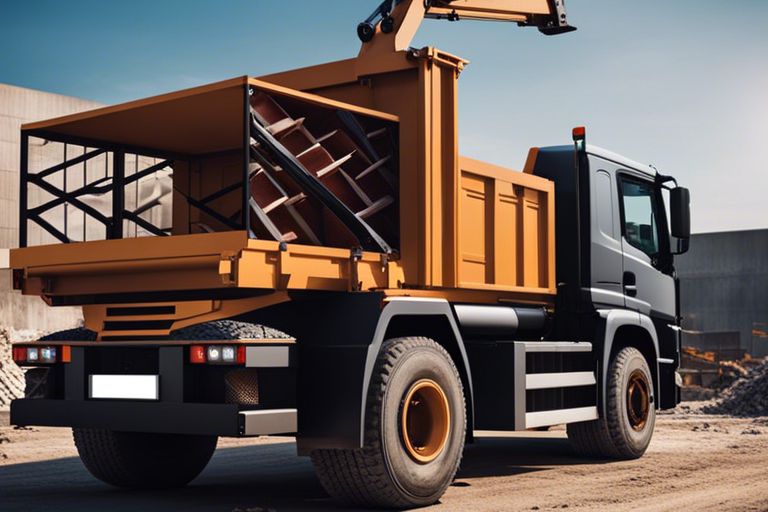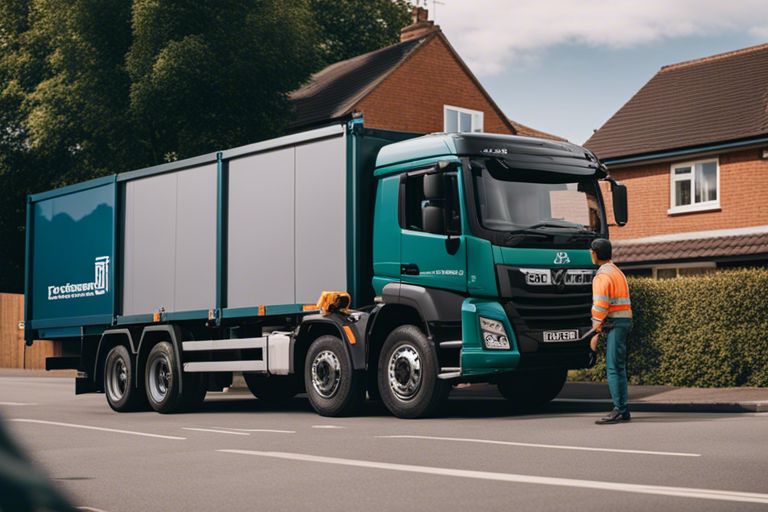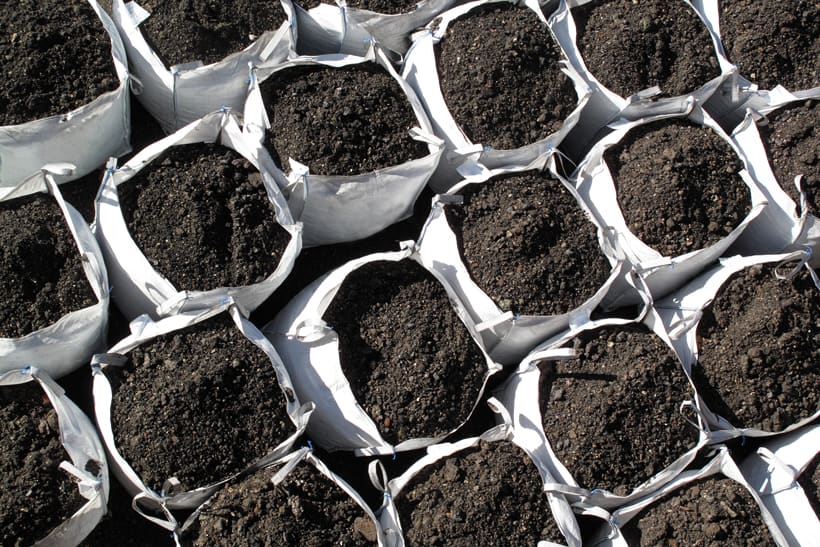Exacerbating or causing harm in any way should never be the result of a DIY demolition project. It is crucial to be fully informed about the safety and legal aspects before embarking on any form of demolition work. Failure to adhere to regulations or neglecting safety measures can lead to serious consequences, both in terms of personal injury and legal repercussions. In this blog post, we will provide essential tips and guidelines to ensure that your DIY demolition project is conducted safely and within the bounds of the law. From obtaining the necessary permits to identifying hazardous materials and implementing safety protocols, we will cover all aspects to help you carry out your demolition project responsibly and legally.
Key Takeaways:
- Safety should be the top priority when undertaking DIY demolition projects. It is crucial to follow proper safety protocols and use appropriate personal protective equipment to prevent accidents and injuries.
- Before starting any demolition work, it is important to be aware of legal requirements and regulations in your area. This may include obtaining necessary permits and ensuring compliance with local building codes.
- DIY demolition can be a daunting task, and it is essential to seek professional guidance if you are unsure about any aspect of the project. Consulting with experts can help ensure the safety and legality of the demolition process.
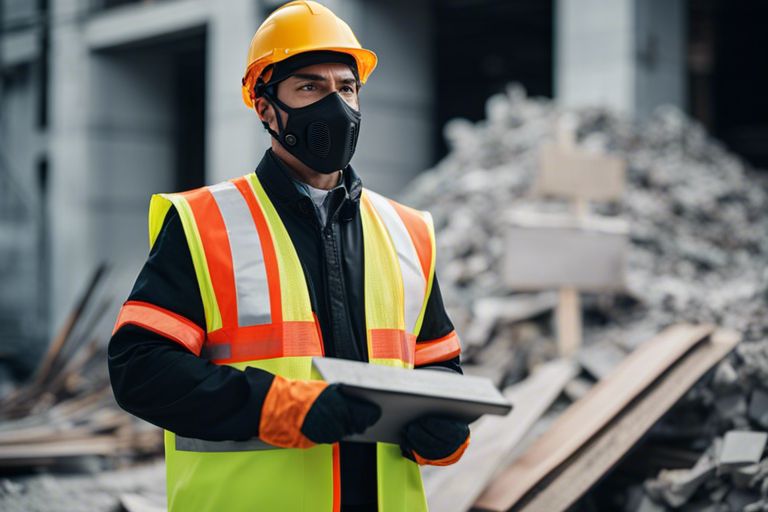
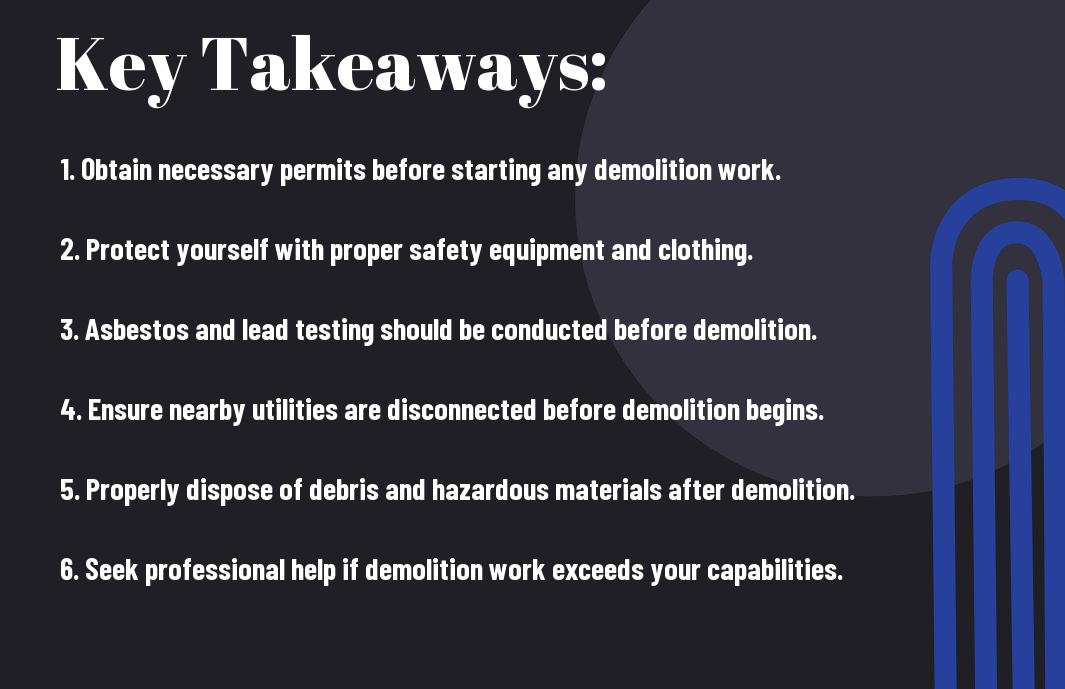
Pre-Demolition Planning
Before you start any demolition project, it’s crucial to carefully plan and prepare for the task ahead. It’s essential to make sure you have all the necessary information and permits in place to avoid any legal or safety issues. For more detailed information on pre-demolition planning, you can refer to What to Know Before Your Start Your Demolition Project.
Evaluating the Scope of Your Project
When planning a demolition, the first step is to thoroughly evaluate the scope of your project. This involves assessing the size of the structure, the materials involved, and any potential hazards such as asbestos or lead. It’s crucial to have a clear understanding of the project’s scope to ensure that all necessary precautions are taken to protect yourself and others from potential dangers.
Securing Necessary Permits
Securing the required permits is a vital part of pre-demolition planning. Different areas have various regulations and requirements regarding demolition, so it’s essential to research and obtain all the necessary permits before starting any work. Failure to do so could result in severe legal consequences and pose a significant risk to the safety of the project.
Before proceeding with the demolition, ensure that you have obtained all the necessary permits, including environmental permits, and have followed all regulations and safety guidelines related to demolition. This will help you avoid potential legal issues and ensure the safety of the entire project.
Safety Protocols
When undertaking any demolition project, prioritising safety is essential. Ignoring safety protocols can lead to serious injury, legal repercussions, and environmental damage. This chapter will outline the key safety measures and legal requirements that should be followed when carrying out DIY demolitions.
Personal Protective Equipment (PPE)
Wearing the appropriate personal protective equipment (PPE) is vital to ensure the safety of everyone involved in the demolition process. This includes but is not limited to, hard hats, safety goggles, ear protection, dust masks, gloves, and steel-toed boots. Each piece of PPE serves a specific purpose in safeguarding against potential injury or harm, and failure to comply with wearing required PPE can result in serious consequences.
Furthermore, it is imperative to ensure that all PPE is correctly fitted, regularly maintained, and replaced when damaged or worn. Failure to adhere to these guidelines can significantly increase the risk of accidents and injuries during the demolition process.
Identifying and Mitigating Hazards
Identifying and mitigating hazards is an ongoing process throughout the entirety of the demolition project. Conducting a thorough assessment of the site for potential hazards, such as asbestos, lead, structural weaknesses, and electrical wiring, is crucial before commencing any demolition work. This assessment should be conducted by competent individuals with a comprehensive understanding of demolition safety protocols.
Once potential hazards are identified, it is imperative to develop and implement a hazard mitigation plan to effectively manage and minimise the risks associated with the demolition process. This may involve implementing engineering controls, administrative controls, or providing specific training to workers to avoid or reduce these hazards.
For individuals undertaking a DIY demolition, it is crucial to be aware of the potential hazards and have a proper strategy in place to address them effectively. Ignoring these hazards can lead to severe consequences, including legal consequences, environmental pollution, and severe injuries.
Legal Considerations
When undertaking a DIY demolition project, it’s crucial to be aware of the legal considerations that apply to the process. Failure to comply with regulations and laws can result in costly fines and potential legal action. To ensure that you stay within the bounds of the law, it’s essential to familiarise yourself with the legal requirements for demolition in your area. 5 Demolition Tips For Your Next DIY Project
Local Regulations and Compliance
Local councils and authorities have specific regulations in place for demolition projects, aimed at ensuring safety and environmental protection. Before starting any demolition work, it’s vital to obtain the necessary permits and approvals from the local authorities. These may include permits for the demolition itself, as well as requirements for waste disposal and environmental impact assessments. Ignoring these regulations can lead to serious consequences, so it’s imperative to comply with all legal requirements.
Handling and Disposal of Hazardous Materials
One of the most critical aspects of DIY demolition is the proper handling and disposal of hazardous materials. Many older buildings may contain materials such as asbestos, lead paint, or other harmful substances. It is imperative to identify and safely remove these materials to protect both yourself and the environment from potential harm. Failing to dispose of hazardous materials correctly can have severe health implications and may violate environmental protection laws.
For further guidance on the safe handling and disposal of hazardous materials, it’s essential to consult with professionals or local authorities who can provide expert advice and ensure compliance with regulations.
Execution of DIY Demolition
When it comes to executing a DIY demolition project, safety and legal considerations are paramount. It’s crucial to approach the process with caution and adhere to the necessary regulations to avoid any potential hazards and legal repercussions.
Step-by-Step Demolition Process
Before diving into the demolition process, it’s essential to conduct a thorough assessment of the structure and create a detailed plan for the project. This step is crucial as it helps identify any potential hazards and ensures a smooth and efficient demolition process. Once the assessment and planning are complete, the actual demolition can commence. The demolition process should be carried out methodically and systematically to minimise risks and maximise efficiency.
| Step | Description |
| 1 | Obtain necessary permits and permissions from local authorities |
| 2 | Remove hazardous materials such as asbestos and lead |
| 3 | Disconnect utilities and secure the site |
| 4 | Begin demolition from the top down |
| 5 | Dispose of debris responsibly |
Best Practices for a Clean and Efficient Job
Adhering to best practices is essential for ensuring a clean and efficient demolition job. Proper waste management and disposal play a significant role in maintaining a clean work site and minimising environmental impact. Additionally, using the right tools and equipment can greatly improve efficiency and avoid unnecessary delays.
It’s crucial to regularly inspect and maintain equipment to ensure safe and efficient operation. Additionally, clear communication and coordination among workers are imperative for a smooth and effective demolition process.
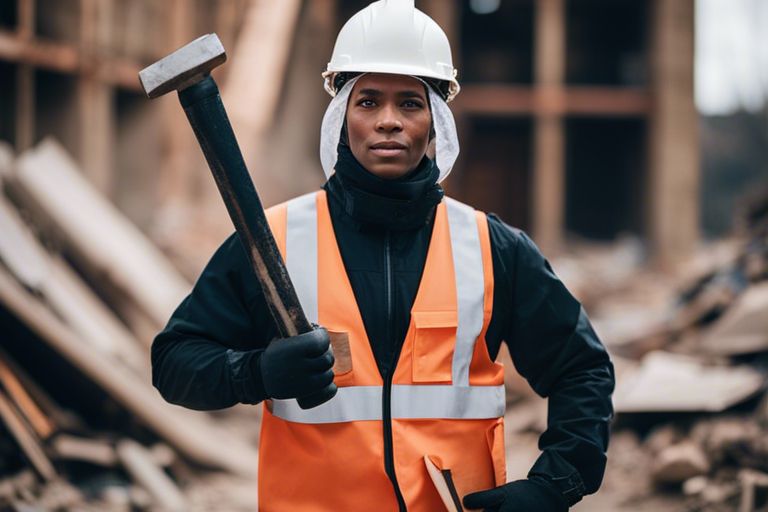
DIY Demolition – Safety and Legal Tips You Should Know
When undertaking a DIY demolition project, it is crucial to prioritise safety and legal compliance. Adhering to safety measures, such as wearing protective gear and securing the work area, can significantly reduce the risk of accidents and injuries. Additionally, familiarising oneself with the legal regulations surrounding demolition, including obtaining necessary permits and properly disposing of materials, is essential to avoid potential fines and penalties. For comprehensive guidelines on demolition safety, the Texas Department of Insurance offers valuable resources and information related to demolition safety. By incorporating these tips into your DIY demolition plans, you can ensure a safe and compliant project that achieves the desired results.
FAQ
Q: What should I consider before starting a DIY demolition project?
A: Before starting a DIY demolition project, it is crucial to obtain the necessary permits and permissions from local authorities. Additionally, it is essential to assess the structural integrity of the building and identify any potential hazards.
Q: What safety precautions should I take during DIY demolition?
A: Safety should be a top priority during DIY demolition. Wear protective gear such as gloves, safety goggles, and a dust mask. Ensure proper ventilation in the demolition area and be cautious of electrical and plumbing systems.
Q: Are there any legal requirements for DIY demolition?
A: Yes, there are legal requirements for DIY demolition. It is important to adhere to local building codes and regulations. Failure to do so can result in fines and legal consequences.
Q: How should I dispose of demolition waste from a DIY project?
A: Proper disposal of demolition waste is crucial. Sort the waste into recyclable and non-recyclable materials and ensure they are disposed of at authorised waste management facilities. Avoid illegal dumping, which can result in environmental harm and legal penalties.
Q: Do I need professional assistance for larger DIY demolition projects?
A: It is advisable to seek professional assistance for larger DIY demolition projects, especially if they involve complex structures or potential hazards. Professional contractors have the expertise and equipment to handle such projects safely and effectively.

